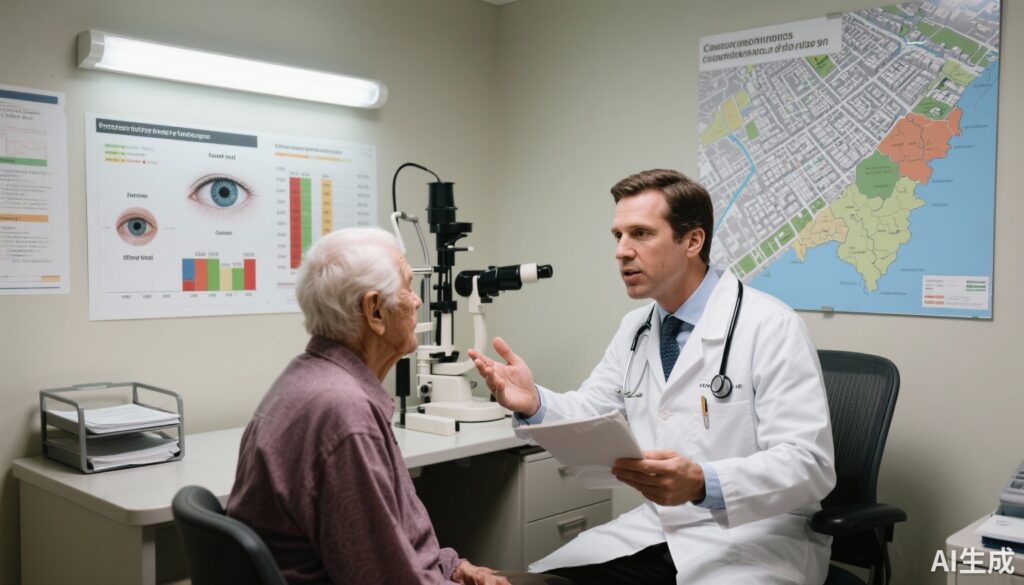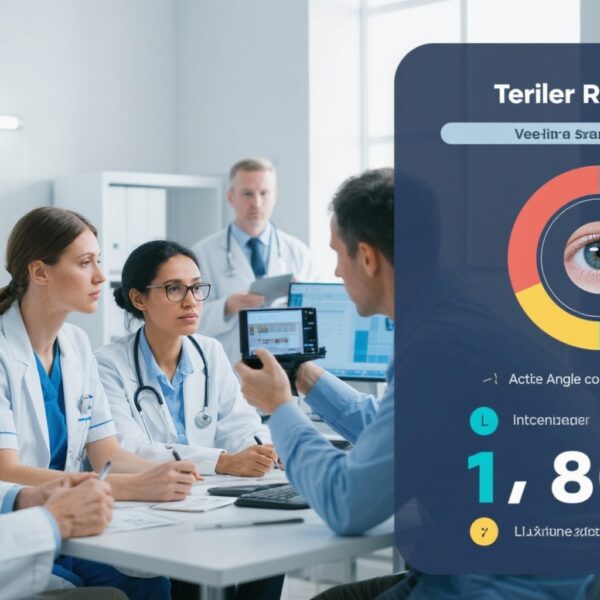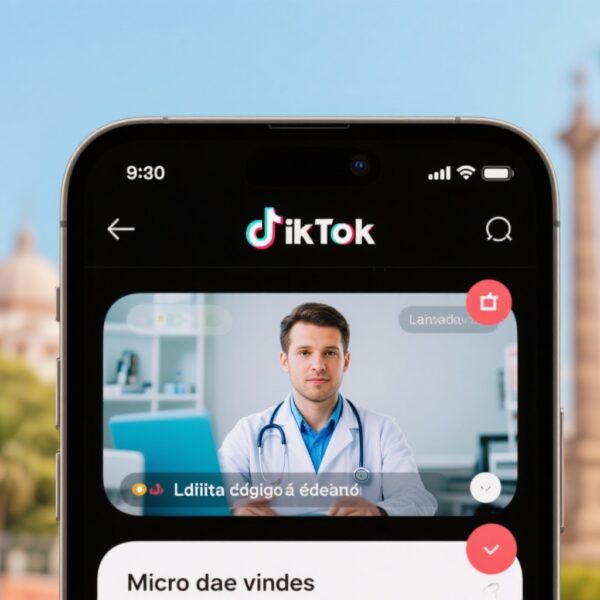Highlight
• Patients with primary open-angle glaucoma (POAG) from lower wealth quartiles show significantly reduced odds of achieving recommended intraocular pressure (IOP) reductions and higher rates of loss to follow-up (LTFU).
• Rural residence is associated with a substantially increased risk of LTFU compared to urban residence.
• Presence of children in the household correlates with greater average IOP reduction, indicating possible social support benefits.
• Understanding nonmedical influences such as socioeconomic status and living environment is essential for optimizing glaucoma management and adherence to care guidelines.
Study Background and Disease Burden
Glaucoma, particularly primary open-angle glaucoma (POAG), remains a leading cause of irreversible blindness worldwide. Despite advances in intraocular pressure (IOP) lowering therapies, disparities persist in visual outcomes among diverse patient populations. Various communities experience disproportionately higher rates of glaucoma-related visual impairment, influenced not solely by medical factors but also by socioeconomic and environmental elements. Recognizing and addressing nonmedical determinants offers a potential pathway to enhance quality of care, reduce preventable vision loss, and improve health equity.
Study Design
This retrospective cohort study evaluated 1466 patients with newly diagnosed POAG receiving care within health systems participating in the Sight Outcomes Research Collaborative (SOURCE) Consortium between January 2010 and December 2022. Data analysis was conducted from March 2024 to June 2025. Inclusion criteria focused on patients newly diagnosed with POAG, ensuring assessment of early management quality and follow-up practices.
Exposures studied included several nonmedical variables: self-reported race and ethnicity (Asian American, Black, Latinx, White), urban versus rural residence, affluence based on the wealth quartile of the patients’ residential community, and household characteristics such as the presence of children.
The primary outcomes assessed were:
- Odds of achieving at least a 15% reduction in IOP between 12 and 18 months following initial POAG diagnosis, aligning with US National Quality Forum recommendations.
- Odds of loss to follow-up (LTFU), defined as absence of follow-up visits within the specified timeframe.
Key Findings
The study population had a mean age of 70 years, with a slight female predominance (54%). Of the 1466 patients, racial and ethnic distribution included 3% Asian American, 32% Black, 7% Latinx, and 57% White individuals.
Among 1030 patients (70%) with at least one follow-up visit at 12 to 18 months, 783 (76%) achieved the recommended IOP reduction threshold. However, notable disparities emerged when stratifying by nonmedical variables:
- Wealth Quartile Impact: Patients in the lowest wealth quartile exhibited 5- to 9-fold lower odds of attaining ≥15% IOP reduction compared to those in higher quartiles. This stark socioeconomic gradient underscores significant barriers to effective glaucoma management that extend beyond clinical treatment protocols.
- Loss to Follow-Up (LTFU): The wealthiest quartile experienced a 61% lower risk of LTFU compared to the least wealthy (OR 0.39; 95% CI, 0.18-0.84; P = .02). Rural residents faced a substantially higher likelihood of LTFU than urban counterparts (OR 5.54; 95% CI, 1.13-27.08), suggesting geographic and infrastructural challenges influencing adherence to care.
- Household Composition: Patients residing in households with children attained an average 4-mm Hg greater IOP reduction compared to those without children (95% CI, 0.99-7.13; P = .01). This may reflect greater social support or healthcare engagement, potentially mitigating barriers.
- Race and Ethnicity: While descriptive statistics provided patient distribution, the primary analysis emphasized socioeconomic and residence factors over racial/ethnic differences in outcomes, although these variables remain relevant for multifactorial disparity analyses.
Expert Commentary
This study elucidates critical nonmedical determinants impacting the effectiveness of glaucoma care in newly diagnosed POAG patients. The profound effect of wealth on both clinical outcomes and follow-up adherence reflects systemic issues such as insurance coverage, medication affordability, transportation access, and health literacy. Rural patients’ vulnerability to LTFU highlights the need for innovative care delivery models, including telemedicine and community outreach programs.
The finding that children in the household correlated with better IOP control suggests the positive influence of familial support structures on treatment adherence. While race and ethnicity effects are complex and interwoven with socioeconomic factors, the study underscores that economic status can be a predominant driver of disparities.
Limitations include the retrospective design and potential confounding factors inherent in observational studies. Additionally, some subgroups, such as Asian Americans, were underrepresented, which may limit broader generalizability. However, the large sample size and robust consortium data enhance the reliability of these findings.
Conclusion
This comprehensive investigation highlights the significant influence of nonmedical factors—particularly socioeconomic status and geographic residence—on the quality of glaucoma care, measured by IOP reduction and retention in follow-up. Addressing financial barriers and structural inequities is essential for improving glaucoma management and preventing avoidable vision loss.
Clinicians should integrate assessments of patients’ social determinants into treatment planning, ensuring tailored support for vulnerable populations. Health systems and payors must prioritize strategies promoting equitable access to IOP-lowering interventions and sustained follow-up care, including patient education, subsidized therapies, and outreach in rural areas.
Future research should explore targeted interventions to mitigate these disparities and elucidate mechanisms linking household and community factors to glaucoma outcomes, fostering more personalized and effective care pathways.
References
1. Ige MO, French DD, Chaudhury AS, Li Y, Andrews CA, Kanwar K, Zhou X, Marwah S, Evans CT, Kho AN, Bryar PJ, Stein JD; Sight Outcomes Research Collaborative (SOURCE) Consortium. Quality of Care in Patients With Newly Diagnosed Glaucoma. JAMA Ophthalmol. 2025 Sep 18:e252995. doi: 10.1001/jamaophthalmol.2025.2995. Epub ahead of print. PMID: 40965904; PMCID: PMC12447283.
2. Quigley HA, Broman AT. The number of people with glaucoma worldwide in 2010 and 2020. Br J Ophthalmol. 2006;90(3):262-267. doi:10.1136/bjo.2005.081224
3. Prum BE Jr, Rosenberg LF, Gedde SJ, et al. Primary Open-Angle Glaucoma Preferred Practice Pattern®. Ophthalmology. 2020;127(1):P1-P65. doi:10.1016/j.ophtha.2019.09.015
4. Centers for Disease Control and Prevention. Social Determinants of Health: Know What Affects Health. https://www.cdc.gov/socialdeterminants/index.htm


